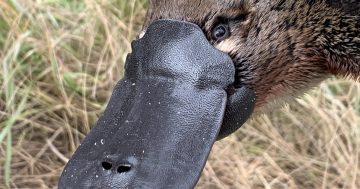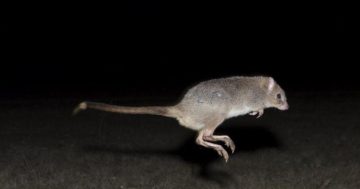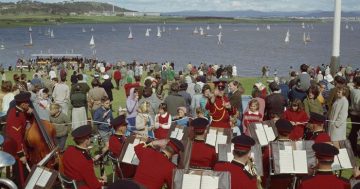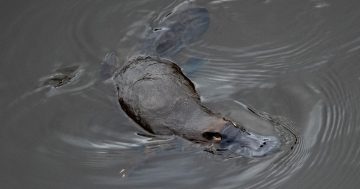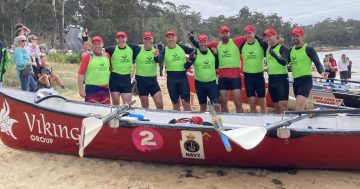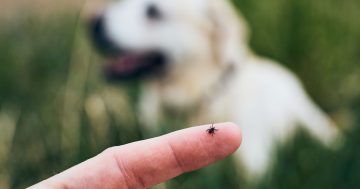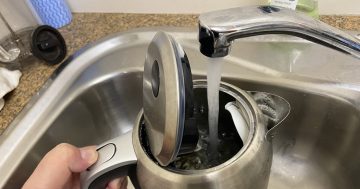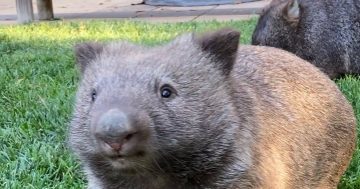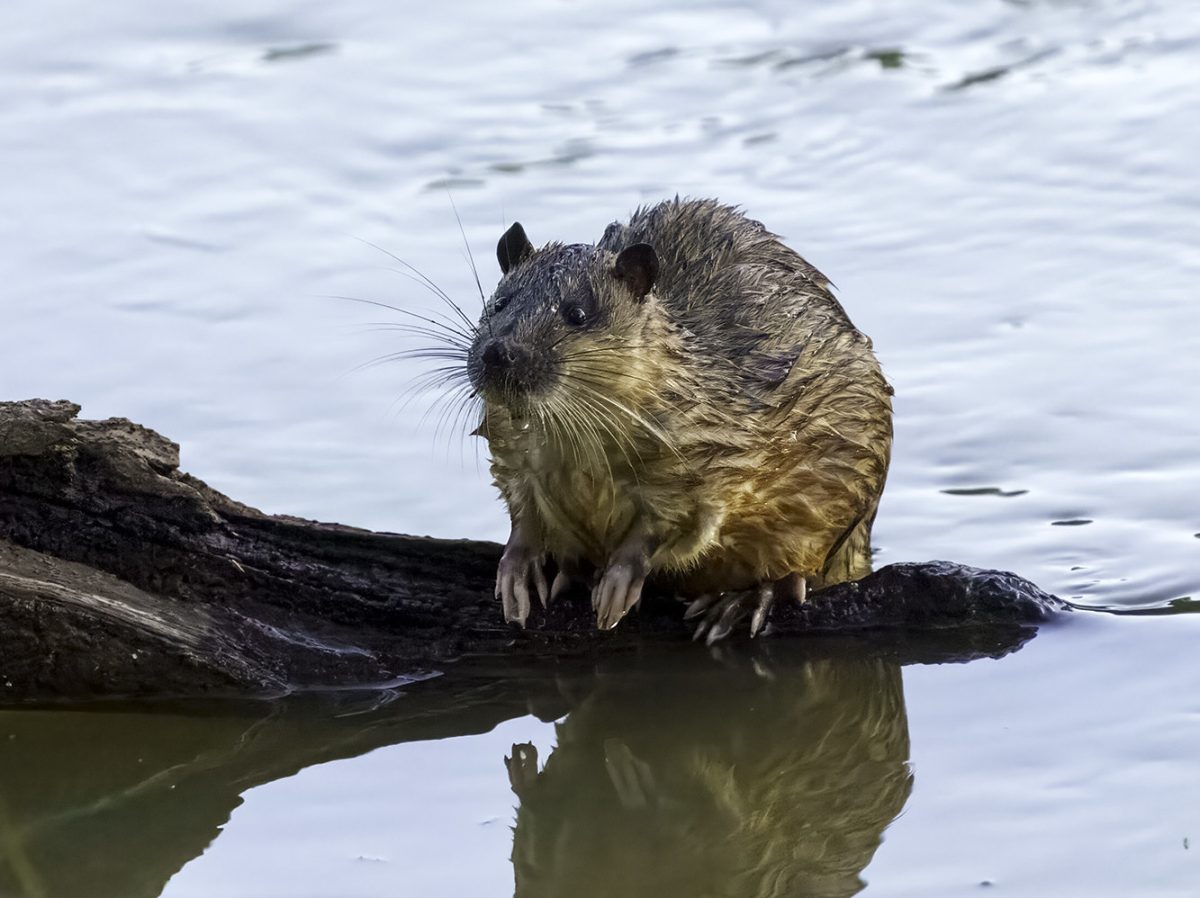
A Rakali resting on a log, showing off its very long whiskers, small ears, thick fur and partly webbed hind toes. Photo: David Cook.
I get it that many people have a strong aversion to rats.
Historically, they are associated with the spread of some pretty nasty diseases, notably bubonic plague (the ‘black death’); they attack crops and fruit on trees, can damage stored food and have caused ecological disasters, especially on islands. But, in Australia, at least, this is all the work of a couple of species that we have brought here. Any rat in a Canberra garden or home is either a Black or Brown Rat, both introduced.
However, Australia does have native rats, and one of them, the Rakali or Water Rat, is quite common along streams and in lakes in eastern Australia (plus the Top End and the south-west).
Compared with the ‘old Australians’, however, the marsupials and monotremes (Echidna and Platypus), even the Rakali is a relative newcomer.
Until about 5 million years ago, there were no rats in Australia, but we were drifting north towards Asia. Eventually, we got close enough for some Asian rats to be carried to our northern shores on rafts of drifting vegetation. They had a whole continent to expand into, and in so doing, gave rise to several new species, including the Rakali. It adopted a fresh-water lifestyle and became the first Australian mammal since the Platypus to live much of its life in the water. It seems very curious to me that in 65 million years of isolation, not a single marsupial in Australia has done this.
We can see Rakali at any of the suburban lakes, along the rivers, at Jerrabomberra Wetlands and the Tidbinbilla Sanctuary ponds. It is a big animal, up to 60cm long, including the tail, which has an obvious long white tip. It has thick fur, small ears and prominent whiskers. If seen out of the water, it is beautifully coloured, dark chocolatey or slaty on the back with coppery tones and a creamy or orange underside. The fur is waterproof and provides insulation, while the broad hind feet are partially webbed to help in swimming. Its head is flat and streamlined and the eyes and nostrils are right on top, to be above water.
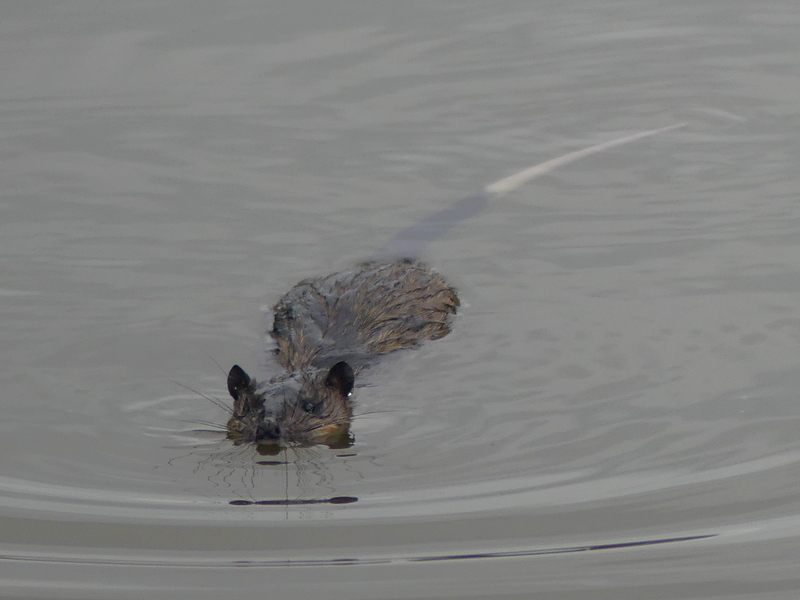
A swimming Rakali showing its eyes and nostrils high on its head out of the water, and its very distinctive long white tail tip. Photo: Ian Fraser.
The fur and their habit of burrowing into banks led to the widespread killing of Rakali in earlier days, but they are now protected, and numbers have rebounded.
Despite their essentially aquatic lifestyle, they regularly move kilometres across the country to new water environments. Soon after I arrived in Canberra a few decades ago, I was sitting in the ANU Refectory – I wasn’t a student, but it was then a good place for a cheap meal – when I was delighted to see a Water Rat, as they were then always known, trot along the path past the full-length window.
There’s a good population in Sullivans Creek, or at least the non-concrete parts of it.
The name ‘Rakali’ was recommended by the Australian Environment and Heritage Department (as it was called at the time) in the 1990s in an attempt to separate this lovely native animal from the generally hated exotic rats that I discussed above. It’s the name used by the Ngarrindjeri people of the lower Murray and Coorong in South Australia and, while it’s taken a while, it seems to be gaining traction fairly widely.
However, both names are perfectly valid, and part of me doesn’t want to accept that ‘rat’ is always a bad thing! (Incidentally, ‘Ratty’ of Wind in the Willows fame, while referred to as a Water Rat, was actually a Water Vole, a different rodent altogether.)
Rakalis have a pretty broad definition of what constitutes food.
While they do forage on land, especially in winter, most of what they eat comes from the water, including fish, large water insects, yabbies, mussels, frogs, water birds and some plant matter. On land, the takings include lizards, turtle eggs and fresh carrion.
They are creatures of habit, bringing food back to a flat area or rock to eat. These ‘tables’ are littered with scraps – shells, bones etc. A big mussel can be too hard to crack and will be left in the sun to open when it starts gasping.
The breeding burrow, which often opens among tree roots, is spacious and comfortable, lined with bark and grass, with a pantry for storing food and a nursery chamber where babies are fed. Rakali has come a long way since that long ago landing in northern Australia and is here to stay. It’s very much part of natural Australia and Canberra.
Ian Fraser is a Canberra naturalist, conservationist and author. He has written on all aspects of natural history, advised the ACT Government on biodiversity and published multiple guides to the region’s flora and fauna.












